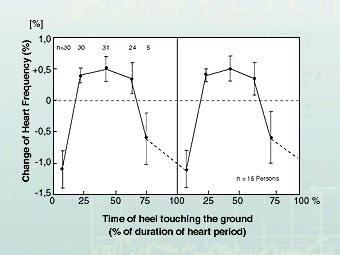|
Experimental studies with a systematic variation of the phase relations between heart rhythm and pace rhythm have shown that the heart rate clearly decreases as an expression of increased economy, when the phase co-action of both rhythms is reconciled with the one which is also chosen for spontaneous walking and running. (illustration 18). The energy saving effects of the phase linking therefore also apply to the relations between vegetative-autonomic and motor rhythms. |
|
 |
|
|
|
| << >>
With kind permission of AAR EDITION © AAR EDITION INTERNATIONAL 2001 |
|
| B A S I C M U S I C M E D I C I N E R E S E A R C H |
|
The
Biological Fundamentals of the Digital Stress Management Chronobiological Aspects of Music Physiology continued |